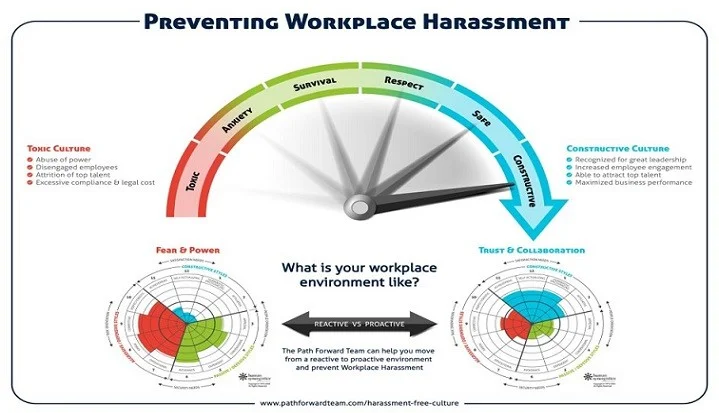Harassment Training Doesn’t Prevent Harassment – Now What?
Last week I met a man, formerly with IBM, now preaching the gospel of strong organizational cultures. In particular we discussed harassment in the workplace and the degree to which it ripples in a negative way, throughout the organization.
It surprises us both how most organizations miss the importance of this topic as part of their strategic plan. To me the subject of a strong culture is both a strategic one and a financial one with implications for both.
Jim has authorized me to share the following article he wrote on the subject. I hope you enjoy it and find it of interest. If you do, stay tuned for the second part in this series.
According to a 2016 report from the U.S. Equal Employment Opportunity Commission (EEOC), “much of the training done over the last 30 years has not worked as a prevention tool – it’s been too focused on simply avoiding legal liability.” Annual sexual harassment training programs can reduce legal liability by making employees aware of the issue and the company’s anti-harassment policies. But, overall, research indicates these programs have not been effective at changing attitudes or behaviors.
It’s not just sexual harassment. Any type of harassment that creates a “hostile work environment” can cost a business in fines, settlement costs, legal fees, and lost productivity. While these tangible costs are easy to calculate, there are many hidden costs that are just as real, such as damage to a company’s brand and reputation, lost customers, lower employee engagement, employee turnover, cost of hiring replacements, etc. According to the EEOC report, in 2015 they recovered $164.5 million for workers alleging workplace harassment – and these direct costs are “just the tip of the iceberg.” Proactively dealing with the challenge of harassment in a holistic way can save a company money and save the company’s brand and reputation.
It’s time to look beyond annual harassment training to provide a safe workplace for all employees. Business leaders and HR professionals must look deeper to understand their organizations’ culture and inspect which behaviors are encouraged, allowed, or just plain tolerated. Often, the behaviors that are most prevalent reflect leadership expectations to “get things done.” These aggressive behaviors, in turn, create an environment where control and power are the dominant force of motivation. This creates the conditions where harassment is most likely to occur and least likely to be reported.
What's needed is a new approach! A more effective approach is to assess the overall culture with both quantitative and qualitative data to understand what the cultural norms are, map the gaps between the current state culture and the preferred culture, as described both by leaders and employees, and then embark upon a culture change initiative to close those gaps.
In my next post, I will share insights that I have learned from successful culture change initiatives and provide practical tips to consider when starting an organizational culture change initiative.

